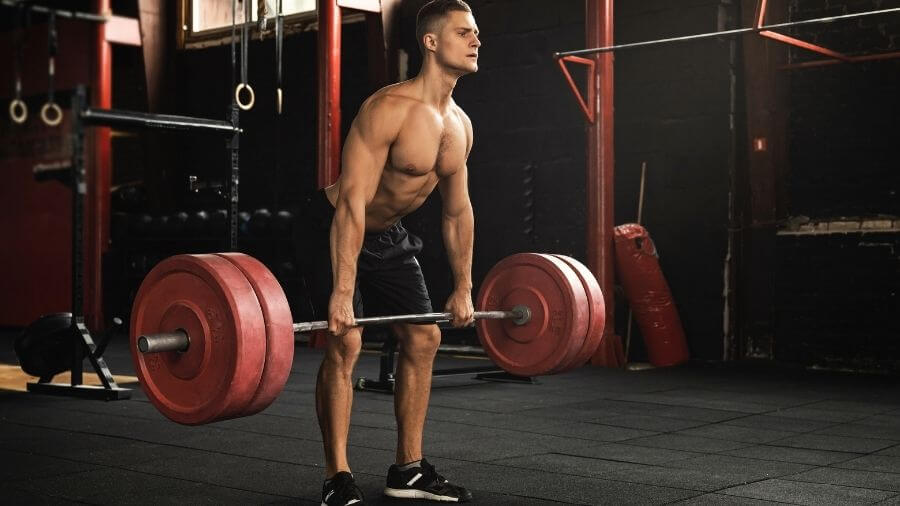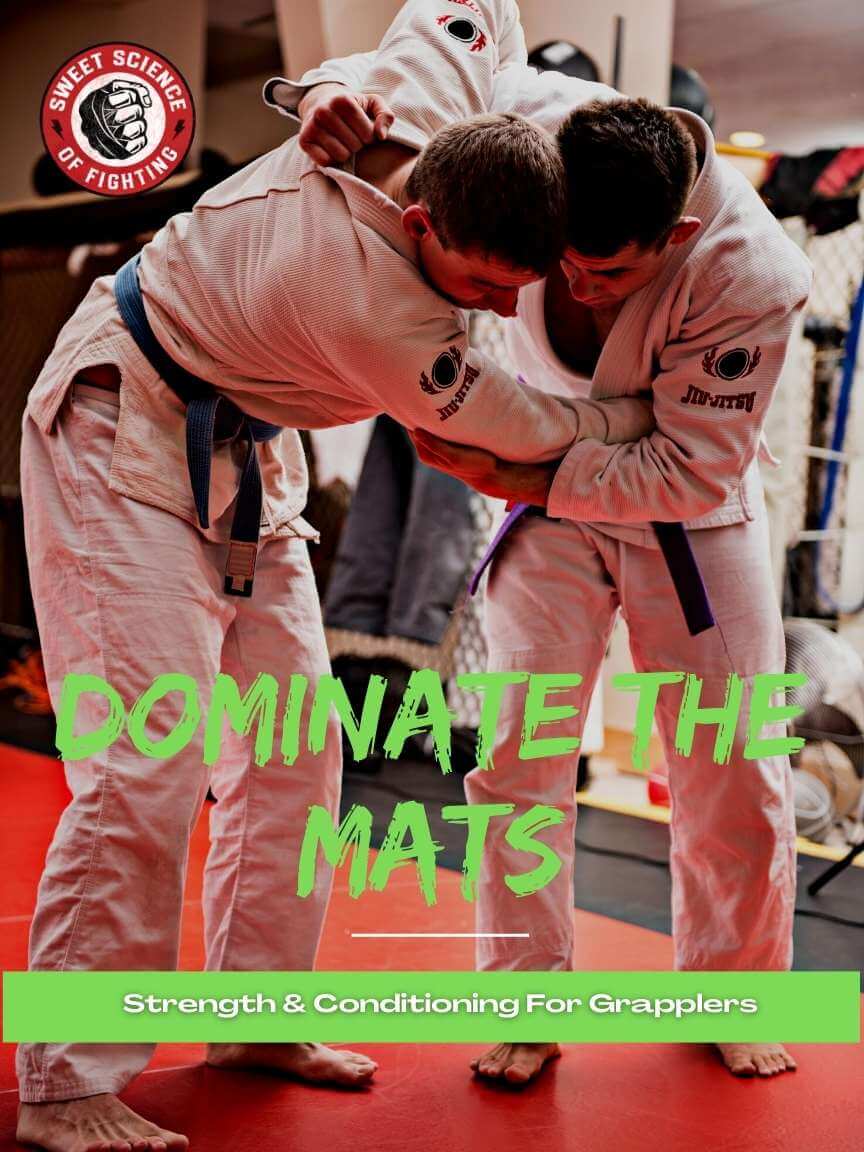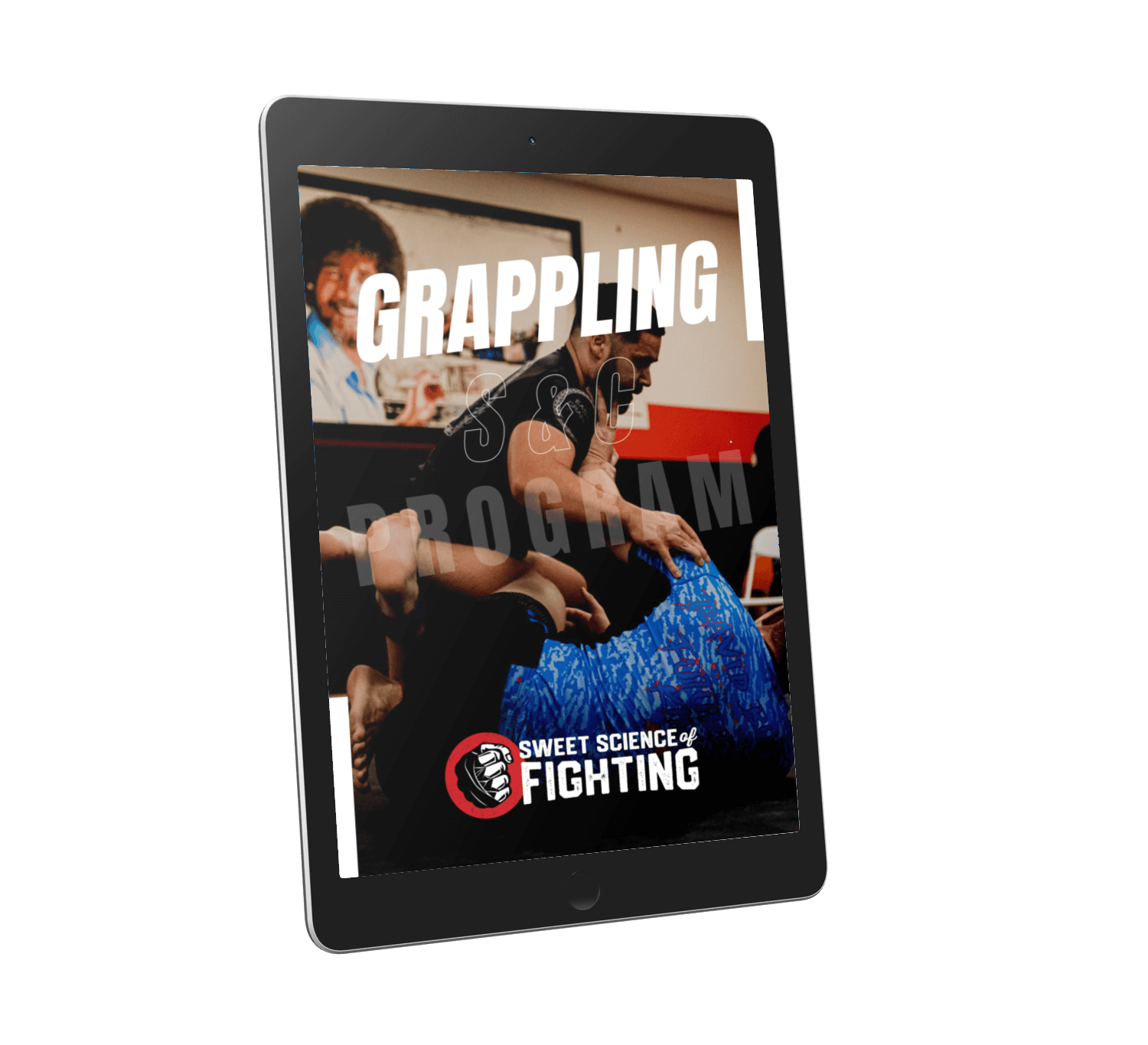Powerlifters are the kings of deadlifting. While we shouldn’t take everything from Powerlifting regarding BJJ strength training, some aspects translate to BJJ performance. One of them being the deadlift. But how good are they for BJJ?
Are Deadlifts Good For BJJ?
Deadlifts are an excellent exercise for BJJ. They directly train the muscles responsible for maintaining your posture when wrestling and when inside the guard. However, be careful with the volume and intensity of your deadlift workouts.
Because your lower back and hips can take a beating during BJJ class, going too heavy, too often, and too much can increase your risk of injury. Not to mention you’ll be damn sore for class.
How To Deadlift For BJJ
Step 1: Setup
Start by placing your feet under the bar. The barbell should cut your feet in half when looking straight down. To reach down to grip the bar, push your hips back like you’re performing a Romanian deadlift.
Once your hips are pushed back, bend at the knees so you can grip the bar. Your hands should be slightly outside your legs. Set a straight back by creating tension in your entire body, focusing on the lats, glutes, and hamstrings.
This tension will take the slack out of the bar. The slack is the movement of the barbell before the plates leave the floor. Without removing this slack, you’ll lose your setup position when initiating the pull, severely hampering your deadlift numbers.
Think about squeezing tennis balls in your armpits to create tension in the lats and keep the bar close. Your weight should be in your midfoot slightly toward your heels so you can push with the whole foot.
Step 2: Initiating The Pull
Push hard with your legs to get the bar off the floor. Think about pushing the floor away instead of pulling up. This will help to engage your legs instead of pulling with your back. The bar should stay close to your shin and potentially scrape them.
Step 3: Locking Out
Once you get to your knees, thrust your hips forward as fast and aggressively as possible. Squeeze your glutes as you lockout. Don’t lean back or arch your lower back. This is a common mistake beginners will make. Further, don’t pull your shoulder blades back at the top.
Benefits Of The Deadlift For BJJ

Here are a few of the main benefits of deadlifting for BJJ.
5 Step Blueprint To Build A BJJ Strength Workout To Demolish Your Opposition
Learn how to plan your strength training to maximize transfer to the mats.
Develop Full Body Maximal Strength
Maximal strength underpins most other strength and power qualities. The stronger you are, the more force you can potentially produce during different movements under different time constraints.
Further, getting a bigger deadlift enhances your strength reserve. An easy example is someone who can deadlift 315 lbs vs. 225 lbs. When both these lifters are given 185 lbs to perform max reps, the 315 lb deadlifter will be able to perform more reps as he has a larger strength reserve.
This transfers to BJJ, where if an opponent is trying to break your posture in the guard or standing, being stronger means the force needed to resist is at a lower percentage of your maximum force production, so you fatigue slower.
Finally, lifting heavy weights desensitizes the Golgi tendon organ (GTO), which is responsible for protecting muscles and tendons. When it senses force production is too high, it pumps the brakes and limits the force output of the muscle.
However, these brakes kick in early in those with little strength training background. We can delay this response through heavy lifting to take the handbrake off our force production capabilities.
Maintain Strong Postures When Rolling
The muscles of the back and hips help resist your opponent pulling on you to break your posture. The deadlift directly strengthens these muscles in an isometric fashion, as you would experience on the mats.
Target Often Neglected Posterior Muscles
The back, glutes, and hamstrings muscles are typically overlooked in favor of the mirror muscles. The chest, shoulders, arms, and quads. Deadlifts can help provide balance within the body by strengthening these neglected muscles.
Trap Bar vs. Barbell Deadlift For BJJ?
There are vast differences between the trap bar and barbell deadlift you need to be aware of:
- Trap bar deadlifts allow greater peak power and velocity when lifting the same load as the conventional deadlift, and you can lift more weight with the trap bar [1].
- Trap bar deadlifts place less stress on the lower back and increase the stress on the quads compared to conventional deadlifts [2].
- Trap bar deadlifts make it easier to reduce the range of motion, if necessary, with high handle placements.
So, if you are in a training phase where you are doing a lot of hard rolling, the trap bar deadlift will be a better option. If you are doing more technical BJJ and less rolling, then the barbell deadlift is an excellent option to strengthen the lower back.
Sumo Deadlift For BJJ?
The sumo deadlift is not a variation I’d use for BJJ. The wide stance, upright torso, and shortened range of motion don’t excite me. The conventional barbell or trap bar deadlift is your best option.
Summary
Use the deadlift as part of your strength training for BJJ if you enjoy performing the exercise. I recommend rotating between trap bar and conventional barbell variations depending on how hectic your BJJ schedule is to save your lower back.
Dominate The Mats And Manhandle The Opposition
3 different strength training programs turn you into a monster on the mats. Prepare yourself for the mats and for competition while prioritizing your BJJ training.


References
1. Lockie, R. G., Moreno, M. R., Lazar, A., Risso, F. G., Liu, T. M., Stage, A. A., … & Callaghan, S. J. (2018). The 1 repetition maximum mechanics of a high-handle hexagonal bar deadlift compared with a conventional deadlift as measured by a linear position transducer. The Journal of Strength & Conditioning Research, 32(1), 150-161.
2. Swinton, P. A., Stewart, A., Agouris, I., Keogh, J. W., & Lloyd, R. (2011). A biomechanical analysis of straight and hexagonal barbell deadlifts using submaximal loads. The Journal of Strength & Conditioning Research, 25(7), 2000-2009.


